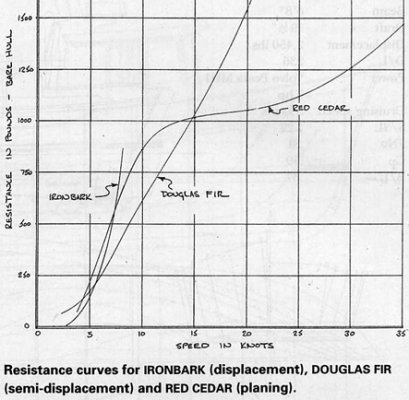Al
Guru
- Joined
- Apr 1, 2012
- Messages
- 2,206
- Location
- usa
- Vessel Name
- 'SLO'~BELLE
- Vessel Make
- 1978 Marben-27' Flybridge Trawler(extended to 30 feet) Pilothouse Pocket Cruiser[
Greetings- I know there is a thread on this subject earlier on and just not able to locate it. I apology.
Speaking to conversions. In a earlier thread the subject of converting a larger yacht reflecting a very favorable low price as demonstrated in this ad with gas engines.
Were I a few years younger and had the opportunity as I do now to have available two 58 hp diesel engines. One is the current Perkins 4-154 with a 3;1 gear coming out of our boat and a purchased backup to this engine in inventory, a Westinbeke W-58 which is the same hp using the same basic 4-154 Perkins modified by the Japanese company (Not Mazda but they used the modified engine in their trucks during the 70s. It too has a 3;1 gear. While the Perkins has a velvet drive, the Westinbeke has a different gear manufacture.
As the Velvet drive can be direction reversed with a simple flip it would be simple to have counter rotating gears. 100 hp through these 3;1 gears would allow throwing 21X16 wheels and would be on the surface sufficient to move the hull at hull speed or 6.5/7 knots. (Not scientific, just using the current ratio and wheel on a 27 foot single screw boat of SD construction.)
So, you would have all the accommodations, in a fiberglass hull of known manufacture being driven by economical power at a purchase price of a new 16 foot skiff and outboard of 70 hp. (Assuming a ton of individual owner involvement with the conversion)
It is not the intent to dredge up old debate on various counter thoughts, just wanted to present an example of a backyard project to accomplish a level of boating not readily available to a like thinking DIY type of boater.
1973 41 Fiberglass Chris Craft.
Al
Speaking to conversions. In a earlier thread the subject of converting a larger yacht reflecting a very favorable low price as demonstrated in this ad with gas engines.
Were I a few years younger and had the opportunity as I do now to have available two 58 hp diesel engines. One is the current Perkins 4-154 with a 3;1 gear coming out of our boat and a purchased backup to this engine in inventory, a Westinbeke W-58 which is the same hp using the same basic 4-154 Perkins modified by the Japanese company (Not Mazda but they used the modified engine in their trucks during the 70s. It too has a 3;1 gear. While the Perkins has a velvet drive, the Westinbeke has a different gear manufacture.
As the Velvet drive can be direction reversed with a simple flip it would be simple to have counter rotating gears. 100 hp through these 3;1 gears would allow throwing 21X16 wheels and would be on the surface sufficient to move the hull at hull speed or 6.5/7 knots. (Not scientific, just using the current ratio and wheel on a 27 foot single screw boat of SD construction.)
So, you would have all the accommodations, in a fiberglass hull of known manufacture being driven by economical power at a purchase price of a new 16 foot skiff and outboard of 70 hp. (Assuming a ton of individual owner involvement with the conversion)
It is not the intent to dredge up old debate on various counter thoughts, just wanted to present an example of a backyard project to accomplish a level of boating not readily available to a like thinking DIY type of boater.
1973 41 Fiberglass Chris Craft.
Al

